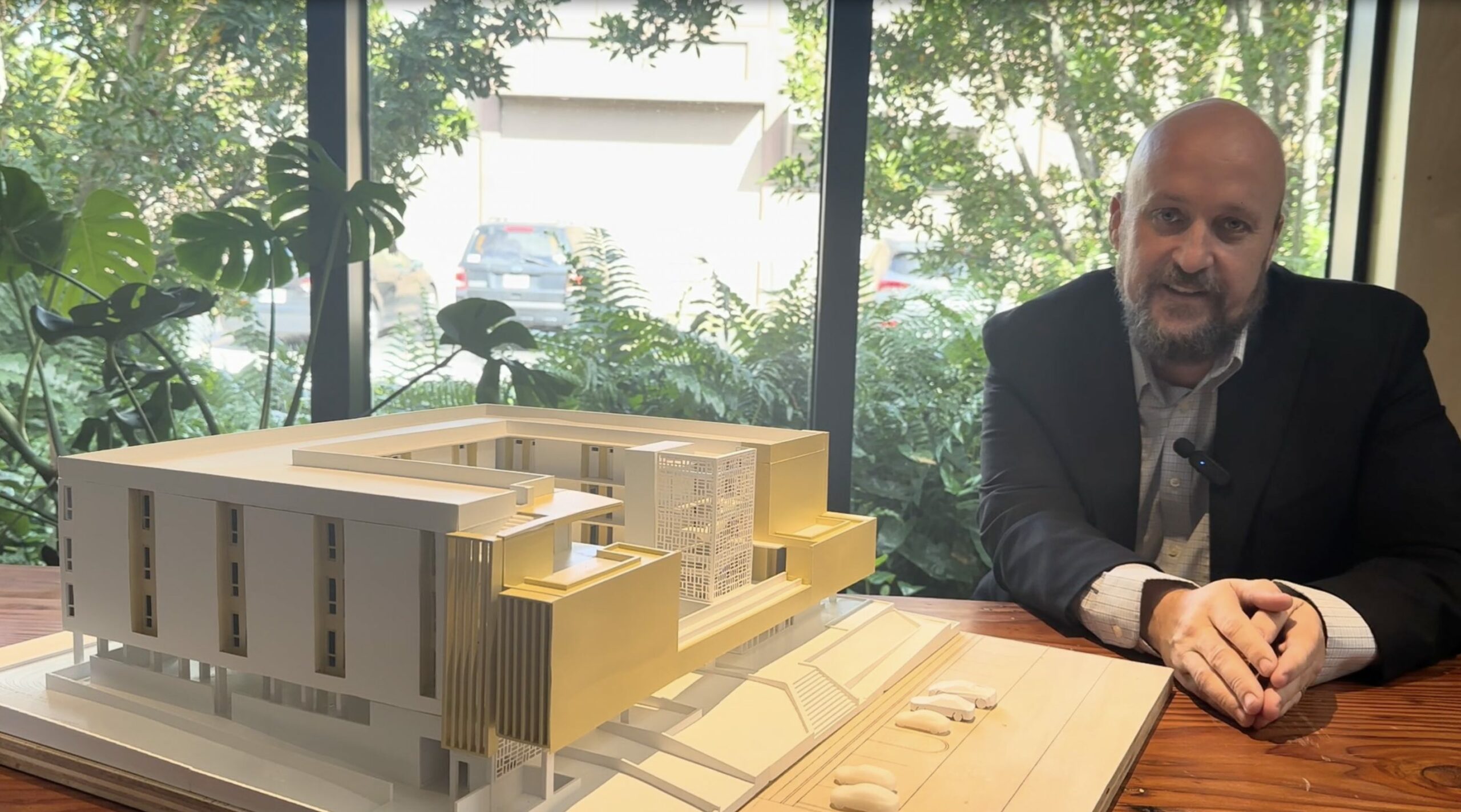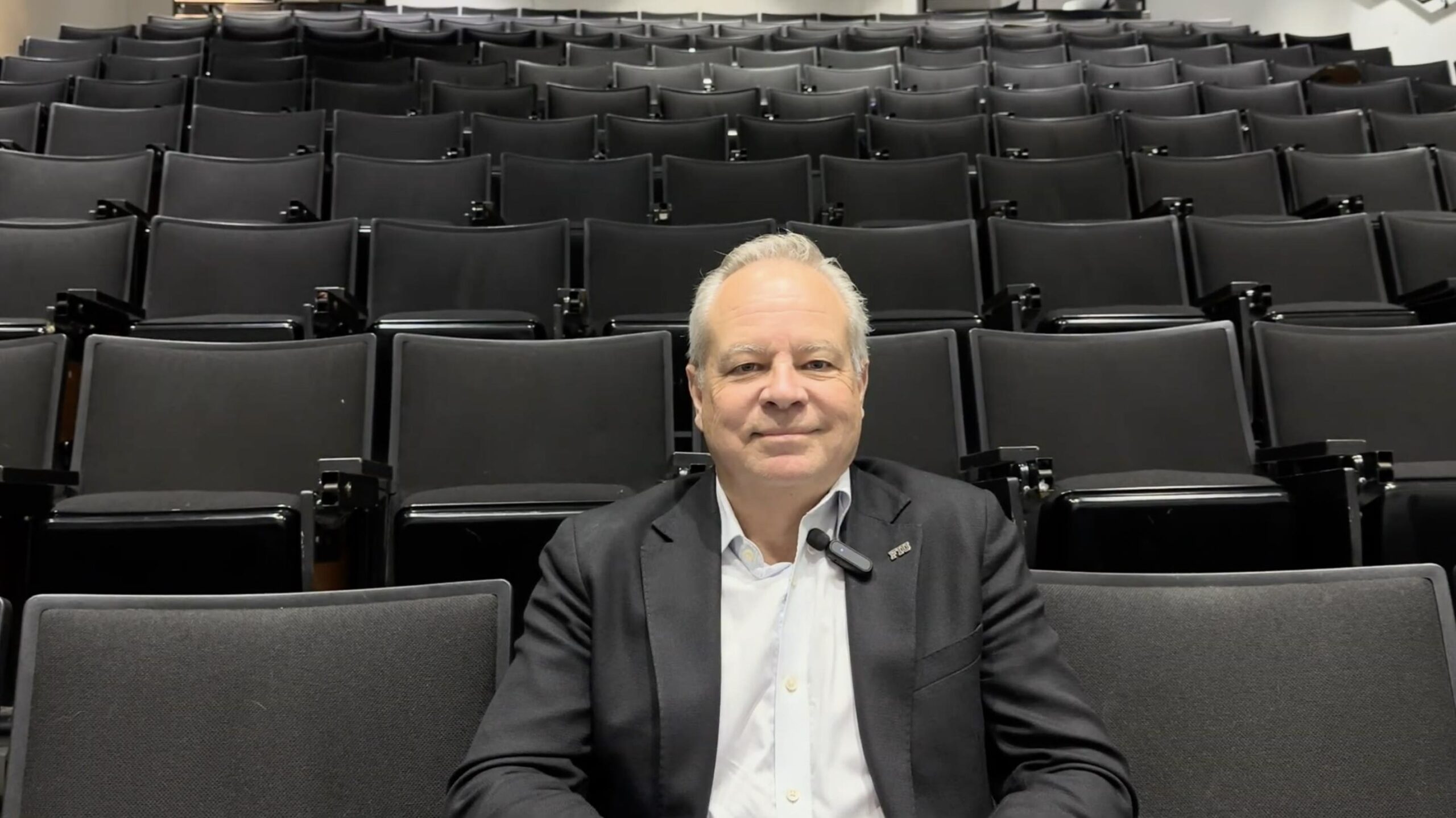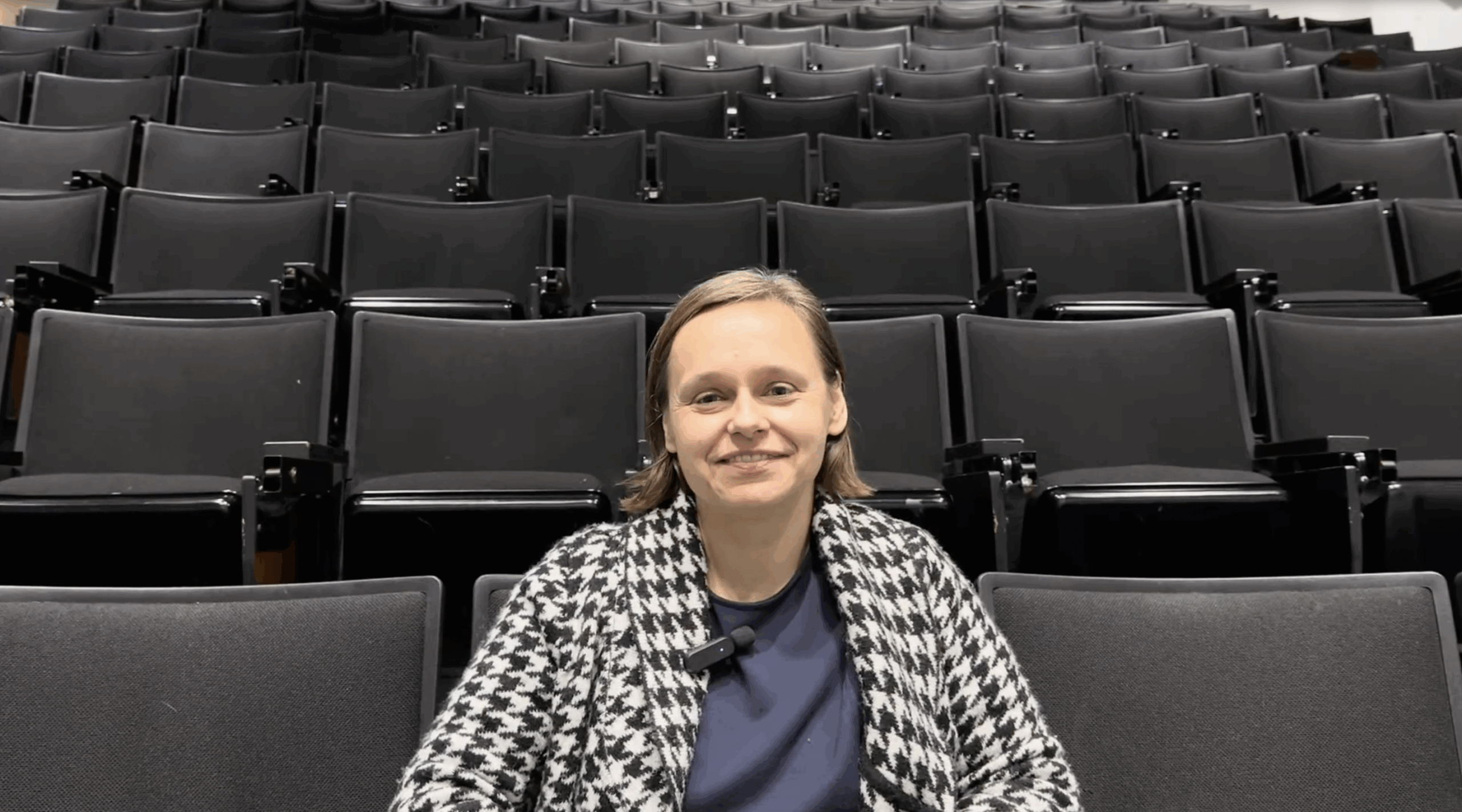
Jeff Huber, architect and director of Brooks Scarpa Architects, stands out for his commitment to sustainability and resilience in the face of climate change challenges. Since his childhood, marked by Hurricane Andrew, he has been passionate about how architecture and urban planning can respond to growing environmental challenges. Today, he works on innovative solutions, notably through his ‘salty urbanism’ project, an approach that integrates sea level rise issues into urban design.
A commitment to resilience in the face of natural disasters
One of the defining moments in Jeff Huber’s career was Hurricane Andrew, which devastated his childhood home and profoundly shaped his vision of architecture. This led him to become interested in the resilience and sustainability of the built environment and how architects can be thought leaders in this field. ‘This event steered his career towards creating more resilient communities and places that are better adapted to natural disasters, particularly flooding linked to rising sea levels.’
Since starting out as a teacher at Florida Atlantic University, Jeff Huber has sought to develop practical solutions for coastal communities facing the effects of climate change. ‘Sea level rise is a complex problem because there is no single set of solutions,’ he explains. In this context, he has collaborated with the city of Fort Lauderdale and Florida Atlantic University on a project called salty urbanism. This project aims to provide urban planners, architects and designers with a tool to think about possible solutions to coastal flooding. Through collaborations with scientists, engineers, architects and municipal leaders, Jeff Huber and his team have sought to integrate ecosystem services into the urban environment to combat flooding, regulate temperature and provide sustainable habitat.
Integrating ecosystem services into urban projects
At the heart of the salty urbanis concept is the idea that landscapes and architecture should no longer be mere adornments, but active infrastructure that integrates with buildings to manage environmental challenges. This includes creating functional landscapes that act as sponges to manage water, while incorporating elements such as gardens or mangrove forests. These landscapes are not only intended to manage flooding, but also to provide a unique habitat and create a lifestyle focused on sustainability.
An exemplary project: Vista Breeze in Miami Beach
One of the most significant projects in Jeff Huber’s career is Vista Breeze, an affordable housing project for seniors in Miami Beach. This 119-unit project was designed in response to several challenges, including sea level rise, flood resilience, and affordable housing. « We raised the entire ground floor to create a courtyard on the second floor. This ensures that the building is flood-resistant, taking into account the maximum sea level rise predicted by 2075. The project also incorporated innovative materials, such as reinforced concrete, to make the building more resistant to repeated flooding and storms.
A model for the future of architecture in the context of climate change
The Vista Breeze project embodies Jeff Huber’s vision of resilient and sustainable architecture in the face of the challenges of climate change. ‘We designed this project to be not only flood-resistant, but also capable of withstanding extreme heat. It’s a project that works even in the event of a power outage, with a generator system to air-condition certain common areas.’ For Jeff Huber, the goal is not only to create sustainable buildings, but also to inspire adaptive solutions on a broader community scale.
Communicating with politicians and communities
One of the major challenges Jeff Huber faces in his work is communicating the issues related to climate change, particularly to politicians. ‘Politics is always a huge challenge. Elected officials understand the issues, but the implementation of solutions is often hampered by costs.’ In his discussions with local authorities, he seeks to raise awareness among politicians about the importance of thinking about neighbourhoods in a sustainable way, while enabling the financing of the necessary infrastructure.
Hope for a sustainable future: A call for collective action
In his approach to urban planning and resilience, Jeff Huber places particular emphasis on optimism and a willingness to adapt. « I think you can find opportunities in challenges. Rather than seeing climate change as a threat, we should see it as an opportunity to reinvent our cities and our ways of life.‘ His message to future generations is clear: ’There is no time to waste. The most important challenge of our time is how to move forward and ensure that what we leave behind is positive. »
Conclusion: Pushing the boundaries of sustainable architecture
Through his projects and research, Jeff Huber illustrates how architecture can play a key role in combating the impacts of climate change. Adopting solutions such as salty urbanism and creating resilient buildings are crucial steps in building sustainable communities. For Jeffrey Huber, architecture is not just about form and style, but also about social and environmental responsibility. ‘We must continue to seek innovative solutions, communicate effectively and never lose sight of the goal: to build a better and more resilient future for generations to come.’
Testimonies from the same panel







